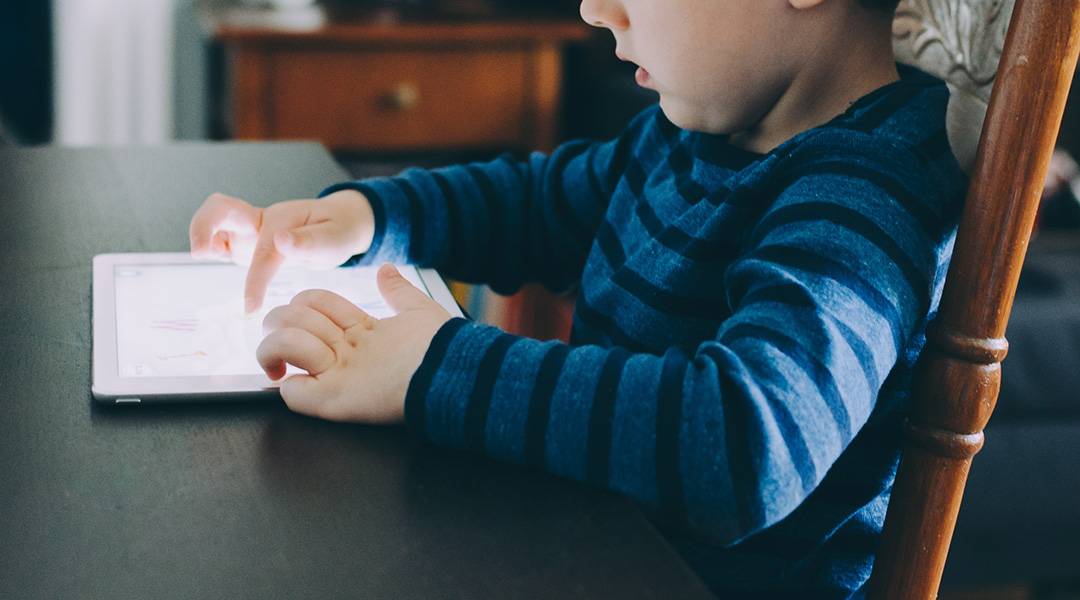Screens have changed the way people experience the world. They’ve given us new ways to communicate, new forms of entertainment, and almost unlimited access to information. But screens are also well-known for their downsides, particularly for children.
“Children and adolescents are in the stage of rapid brain development and maturity,” said Dan Wu, co-author of a study recently published in Advanced Science on the topic. “When they devote a lot of time to these new media, it may reduce their investment in other activities, such as reading, physical activity, or sleep time. These factors may directly or indirectly affect the healthy development of children and adolescents.”
Wu and his co-authors at Zhejiang University investigated the effect of device use on the cognition, behavior, and brain volume of adolescents. “We found that screen use adversely affects language skills, depression problems, and social problems in young adolescents. At the same time, screen time significantly reduced children’s reading time, which also indirectly affected their language skills and brain volume.”
The team used publicly available data from the Adolescent Brain Cognitive Development Project, a large dataset containing information about the brain development and health of 11,880 children in the United States. The dataset includes parent- and child-provided information about how much time kids spend reading and using devices, and parent-assessed information about child behavior, such as rule-breaking, social problems, attention problems, and aggression. The dataset also includes the results of research that asked the children to perform tasks and measured the accuracy of their performance.
Wu and his co-authors used this information to analyze the relationship between screen use and the problems it might cause. “Specifically, we examined the associations between screen use, reading habits, cognitive, behavioral, and brain volume, and found some significant results,” he said.
Since the initial analysis couldn’t determine whether screen use caused these changes or was simply correlated with them, the researchers also used Mendelian randomization, a statistical analysis method that uses genetic variation to address questions about whether modifiable variables can cause specific outcomes — for example, whether screen use can cause behavioral problems.
Jason Nagata, an associate professor of pediatrics at the University of California in San Francisco who was not involved in the study, called the researchers’ method “sophisticated” but noted that the data they used could have potential biases. “The measurement of screen time relies on self-reporting by adolescents, introducing potential biases such as recall, reporting, and social desirability,” he said. “For instance, if adolescents believe they should limit their screen time, there’s a likelihood of underreporting.” He also added that the data was collected before the COVID-19 pandemic, which significantly impacted adolescent screen and reading time.
Although the study concluded that screen use has both direct and indirect effects on the cognition, behavior, and brain development of adolescents, Wu also cautioned that researchers should avoid exaggerating the negative consequences of screen use. “Some behavioral problems may be the causes of excessive screen use rather than the results,” he said.
“In reality, we’re likely dealing with two-way connections between screen time and mental health,” said Nagata. “Adolescents who defy conventional rules may find themselves spending more time on screens. Conversely, an increase in screen time can expose adolescents to more violence and cyberbullying, potentially fostering more aggressive and rule-breaking behaviors.”
Screen use in adolescents is a complicated problem, and there are a lot of variables at play. The Zhejiang University study provides some insight, but it will take time and additional research before scientists will understand the true impact of screen use on adolescent development and what can be done to foster healthy screen use in children.
Reference: Mingyang Li, Dan Wu, et al., Causal Relationships Between Screen Use, Reading, and Brain Development in Early Adolescents, Advanced Science (2024). DOI: 10.1002/advs.202307540
Feature image: Kelly Sikkema on Unsplash

















